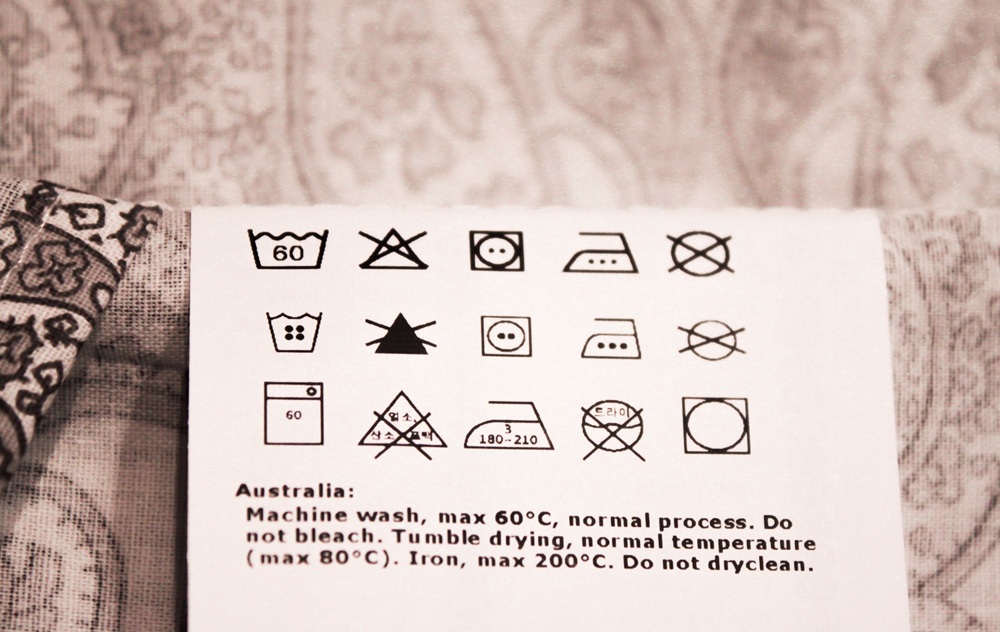Sometimes, in the excitement of finally wearing that brand new shirt or those perfect dark-wash jeans, we skip a step that turns out to be pretty crucial: checking if the color will bleed. It's an easy mistake, and just about everyone’s done it.
One thing is clear here — color bleeding doesn’t always come with a warning label. Not every garment that’s prone to bleeding says so on the tag, and even if it does, who really wants to do separate loads for everything new? That’s why it pays to learn a few quick and easy tricks to test for dye stability before you throw new clothes into the mix.
In this post, we walk you through the simplest ways to figure out if your new clothing items are going to bleed, using nothing more than items you already have at home.
This is one of the easiest and most reliable ways to check if your new clothes will bleed. All you need is a clean white cloth and a little water. It takes less than a minute and works well on shirts, dresses, or anything made from dyed fabric. It’s especially useful for identifying bleeding before you load your clothes into the washing machine or send them off to a local laundry service. If the cloth picks up any dye, take that as your warning to wash it separately, or not at all.
Step 1: Dampen a small section of a clean white cloth or paper towel with cold water.
Step 2: Rub it gently but firmly on a hidden area of the fabric, like the inside of a hem, the seam, or under the armpit.
Step 3: Check the cloth immediately. If you see even a faint transfer of color, that’s a sign the garment isn’t colorfast.
If color shows up on the cloth, you should avoid washing that piece with light-colored items. Consider hand washing it or sending it to a laundry service that knows how to deal with dye-sensitive fabrics.
Another simple way to test for bleeding is with a cold water soak. This method simulates the early stage of a wash cycle, giving you a clear sign if the dye is likely to run. It’s especially useful for clothes that are dark, heavily dyed, or new. If you’re dealing with items made from natural fibers like cotton or linen, this test is even more important.
Step 1: Fill a clean sink, basin, or bucket with cold water.
Step 2: Submerge the garment fully and let it sit for 30 minutes.
Step 3: After soaking, look at the water. If it’s clear, the fabric is likely safe. If it’s tinted, the dye is bleeding.
If the water turns blue, red, or any color at all, that’s your sign to either wash it separately or consider dry cleaning. This method works well before loading your laundry into a shared washing machine at a laundromat or when preparing clothes for a laundry bag pickup.
If you want to test colorfastness without soaking the whole garment, this method is perfect. It focuses on one small section and uses items you probably already have at home. It’s low-effort but gives you visible results. Use this if you’re in a rush or trying to decide what to do with something before tossing it into a load of laundry.
Step 1: Wet a white paper towel with cold water — just enough so it’s damp, not soaking.
Step 2: Place it firmly on an inner seam or the underside of the clothing, then press down gently.
Step 3: Leave it there for 5–10 minutes, then lift it and check for any dye on the paper towel.
If you see dye transfer, even a little, the item is likely to bleed during a full wash. That’s your cue to separate it from your lighter clothes, especially whites. This test is quick and ideal for checking individual pieces like a new dress shirt or colored linen top before loading the washer.

It sounds obvious, but most people overlook this step. The care label tells you more than just whether to use hot or cold water. It often gives clues about whether the dye is stable or if the item is likely to bleed. These small details can save your other clothes from accidental dye transfer.
If the label gives you any of those clues, don’t ignore them. Separate the item immediately and treat it with care. This is especially helpful when preparing clothes for a laundry service. Mention it in your order, so the staff knows to handle it differently. A good laundry provider will appreciate the heads-up.
There’s a long-standing trick in the laundry world: soaking clothes in a vinegar and salt solution to “set” the dye. While this doesn’t work on every fabric or every dye type, it’s still a good way to test the stability of the color before washing. And even if it doesn’t set the dye, it can help you spot a bleeding risk before it causes a bigger problem.
Step 1: Mix 1 quart of cold water with 1 tablespoon of white vinegar and 1 tablespoon of salt.
Step 2: Dip a hidden section of the garment, like a corner or seam, into the solution.
Step 3: Let it sit for 10 minutes, then remove and rinse with cold water. If the soaking water changes color or dye comes out during rinsing, the fabric is not colorfast.
This method is especially useful for natural fiber garments or handmade pieces with unstable dyes. It’s a good test before dropping off clothes at the nearest laundromat or using a laundry service that charges by the pound. By knowing in advance, you’ll save yourself from extra fees, ruined clothes, or customer service headaches if you’re laundering for others (like Airbnb guests).
Don’t risk ruining your favorite pieces just because your new clothes might bleed. Follow the simple tests we shared, or better yet, trust Dallas Parkway Cleaners to handle your first wash with exceptional care. We are a reputable full-service dry cleaning provider who has proudly served the Dallas, Texas community for over 50 years.
Our team uses high-quality, color-safe detergent and personalized wash processes to protect your clothes and home essentials from fading, bleeding, or damage. From single loads to full laundry bags, we offer hassle-free complimentary laundry Pickup and Delivery Service tailored to your lifestyle and schedule.
Visit us at 5000 Belt Line Road, Suite 950, Dallas, Texas, 75254, or call 214-624-6189 for more information about our services, pricing, or to schedule your FREE Pickup and Delivery Service.
A crisp, well-pressed outfit can enhance your overall appearance and confidence, whether for a business meeting or a special event. While at-home ironing can be tedious and often less effective, professional pressing services at Dallas Parkway Cleaners deliver flawless results every time.
Advanced Equipment for Precision
Our professional dry cleaners use industrial-grade pressing tools that provide consistent results without damaging fabrics. The high-quality steam pressing not only removes wrinkles but also sanitizes the fabric, leaving garments looking fresh and clean.
Unmatched Attention to Detail
Our trained staff ensure every seam is straight, every pleat is sharp, and every garment looks impeccable. The expertise in handling different types of fabrics and designs ensures that even delicate items are treated with care.
Save Time and Effort
Why spend hours ironing at home when you can have perfectly pressed clothes with minimal effort? Our professional pressing services allow you to focus on what matters most while we take care of your wardrobe.
Enhance Fabric Longevity
Professional pressing techniques minimize the risk of damage that can occur with improper home ironing. By maintaining the integrity of the fabric, your clothes will not only look better but also last longer.
Conclusion
When you want to make a lasting impression, trust Dallas Parkway Cleaners for expertly pressed clothes. Our services ensure your wardrobe looks its best with minimal hassle.
